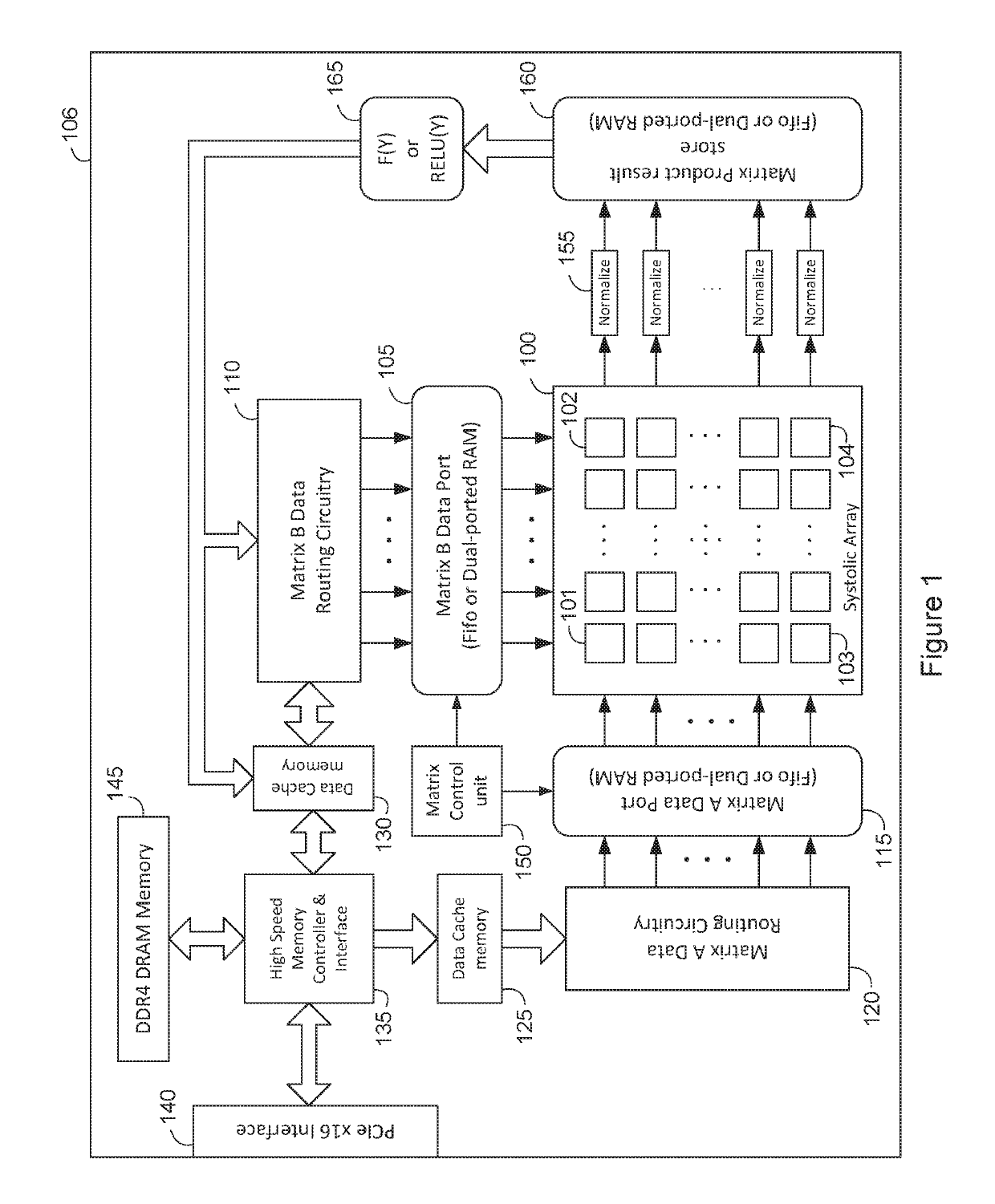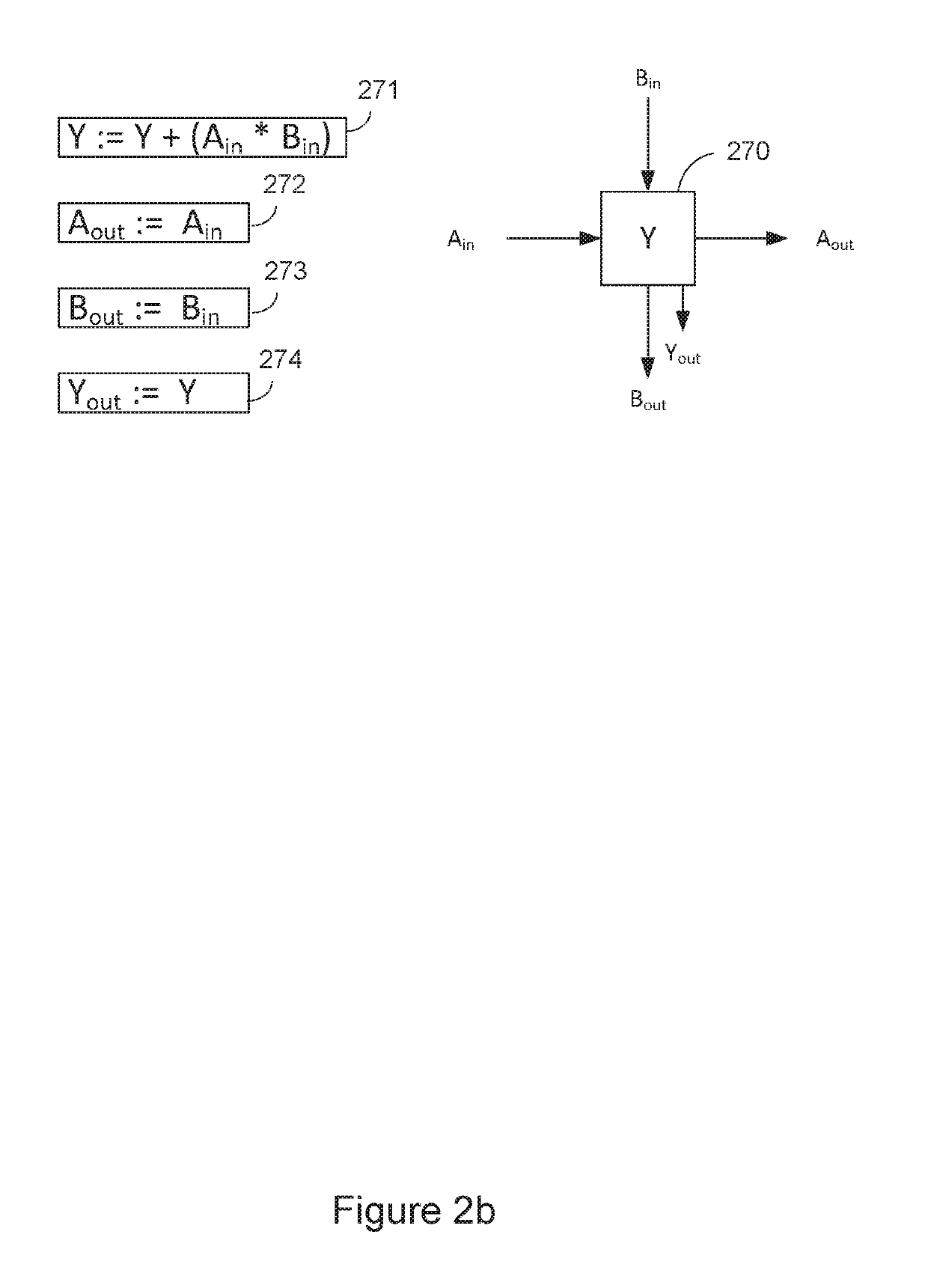Residue number matrix multiplier
a matrix multiplier and residual number technology, applied in the field of matrix multipliers, can solve the problems of high power consumption and cost, cannot support the precision required for training phases, and convolution algorithms are sensitive to limited numerical precision, so as to achieve matrix multiplication, increase arithmetic precision, and improve the effect of efficiency
- Summary
- Abstract
- Description
- Claims
- Application Information
AI Technical Summary
Benefits of technology
Problems solved by technology
Method used
Image
Examples
Embodiment Construction
[0074]This disclosure introduces a new and novel approach to implementing high precision arithmetic for matrix multiplication which uses residue number arithmetic instead of binary arithmetic. The residue number system (RNS) used is a carry free number system that supports signed fixed point numbers; this new version of RNS was disclosed in U.S. Pat. No. 9,081,608.
[0075]A unique property of RNS provides an opportunity to organize the matrix multiplier into separate digit slices. Each digit slice supports its own matrix multiplier unit, called a digit matrix multiplier. A complete RNS word is processed by operating a plurality of digit matrix multipliers in parallel. Because the width of each RNS digit is comparatively small, each digit matrix multiplier is optimized to be fast, efficient and consume less circuit area. By operating a plurality of efficient digit matrix multipliers in parallel, a high precision matrix multiplier is realized. Of important note is that increasing the pr...
PUM
 Login to View More
Login to View More Abstract
Description
Claims
Application Information
 Login to View More
Login to View More - R&D
- Intellectual Property
- Life Sciences
- Materials
- Tech Scout
- Unparalleled Data Quality
- Higher Quality Content
- 60% Fewer Hallucinations
Browse by: Latest US Patents, China's latest patents, Technical Efficacy Thesaurus, Application Domain, Technology Topic, Popular Technical Reports.
© 2025 PatSnap. All rights reserved.Legal|Privacy policy|Modern Slavery Act Transparency Statement|Sitemap|About US| Contact US: help@patsnap.com



